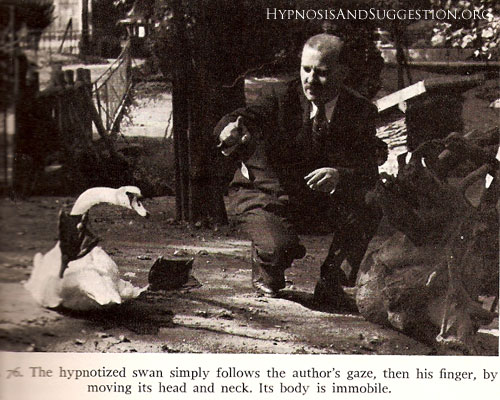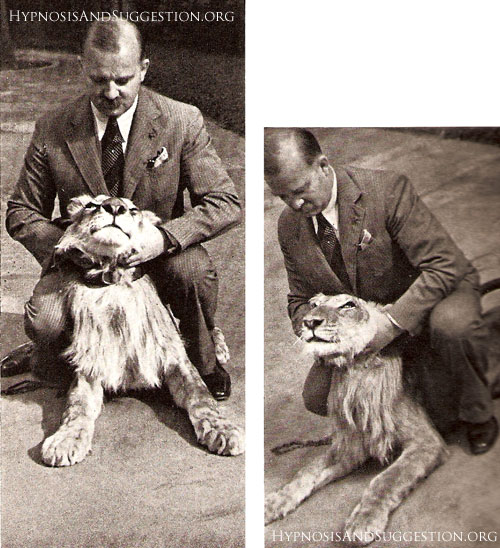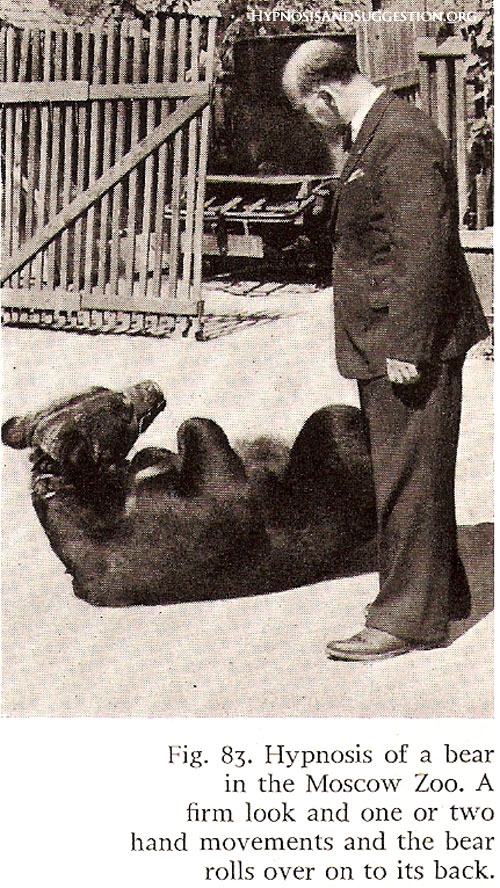Animal hypnosis: Can animals be hypnotised?
Animals can be encouraged to enter a state that, on the face of it, bears some similarities to hypnosis in people. This state is best described as motor inhibition in response to restraint (Erhard et al, 1999) but has also been variously labelled as 'tonic immobility', 'animal hypnosis', 'immobility reflex', 'Totsellreflex', or 'fright paralysis'. Tonic immobility involves physically restraining an animal, which then becomes immobile for a period of time. The immobility usually ends abruptly "with the animal making an almost immediate transition from the immobile to the mobile state" (Gallup, 1974). The processes underlying hypnosis in humans with tonic immobility in animals are likely to be very different. Hypnosis in humans is about verbal suggestions which produce changes in subjective experience. Being relaxed and still is sometimes part of hypnosis, but is not necessary. Tonic immobility in animals is defined by 'immobility' and nothing more. Animals cannot inform us about their subjective experience, and may not be self-aware and able to introspect as humans can.
The pictures below are from Völgyesi (1966) showing some of his experiments with animals:



This BBC video also demonstrates some other examples of tonic immobility
Scientific research on tonic immobility
Castiglioni et al (2009) conducted some interesting research, using tonic immobility in rabbits as a model for hypnosis in humans. They performed a nociceptive conditioning procedure with rabbits in: 1) a normal state; 2) in a state of tonic immobility; 3) after administration of lidocaine (a painkiller). In the conditioning phase the pavlovian conditioning procedure consisted of repeatedly pairing a noise (CS) with an electric shock (US). During a later the testing phase the experimenters measured how much the noise (CS) distracted the rabbits from pushing a lever to obtain food - the idea being that the more distracted the rabbits were, the more unpleasant they had found the conditioning procedure. Castiglioni et al (2009) found that animals trained in the tonic immobility condition were significantly less distracted than the control animals. They believe that tonic immobility in rabbits could provide a useful animal model for hypnotic analgesia in humans

What is hypnosis?
Definitions of hypnosis
Types of suggestion
FAQ
Scientific theories of hypnosis
History of hypnosis
Animal hypnosis
Key people in hypnosis
Demand characteristics
Scientific research
States of consciousness
Neuroscience
Modification of suggestibility
Attention and hypnosis
Pain research
Hypnosis as a research tool
Genes and hypnotizability
What is hypnotherapy?
Is it effective?
Finding a therapist
Depression
Irritable bowel syndrome
Pain
PTSD
Smoking
Surgery
Weight loss
Hypnosis research papers
Suggestibility scales
Scripts
Videos
Forum
Organisations
Journals
Book reviews
© 2007-2019 Dr Matthew Whalley
